A Novel Hybrid Converter Proposed for Multi-MW Wind Generator for Offshore Applications
Abstract
:1. Introduction
- reduction of switching loss;
- reduction in number of switches;
- works with unity PF and less THD;
- cost-effective bi-directional converter;
- reduction of current rating power devices; and,
- improved the converter handling power capacity up to multi-MW.
2. Front End Active Rectifiers for WECS
3. Proposed Converter Configuration
Parallel Operation of Converters
4. Control Strategy for the Proposed Converter
4.1. NPC Converter Control
4.2. Vienna Rectifier Control
5. Simulation Results
6. Experimental Results
7. Conclusions
Author Contributions
Funding
Acknowledgments
Conflicts of Interest
References
- Burton, D.S.T.; Jenkins, N.; Bossanyi, E. Wind Energy Handbook; John Wiley & Sons Ltd.: Chichester, UK, 2001. [Google Scholar]
- Doubrawa Moreira, P.; Scott, G.N.; Musial, W.D.; Kilcher, L.F.; Draxl, C.; Lantz, E.J. Offshore Wind Energy Resource Assessment for Alaska; No. NREL/TP-5000-70553; National Renewable Energy Lab.(NREL): Golden, CO, USA, 2018.
- National Development and Reform Commission. Available online: http://finance.sina.com.cn/roll/2017-04-25/doc-ifyepnea4974842.shtml (accessed on 25 April 2017).
- Wang, S.; Wang, S. Impacts of wind energy on environment: A review. Renew. Sustain. Energy Rev. 2015, 49, 437–443. [Google Scholar] [CrossRef]
- Global Wind Energy Council (GWEC). Global Wind Report: Annual Market Update. April 2017. Available online: http://www.gwec.net (accessed on 14 January 2018).
- Blaabjerg, F.; Ma, K. Future on power electronics for wind turbine systems. IEEE J. Emerg. Sel. Top. Power Electron. 2013, 1, 139–152. [Google Scholar] [CrossRef]
- Blaabjerg, F.; Liserre, M.; Ma, K. Power electronics converters for wind turbine systems. IEEE Trans. Ind. Appl. 2012, 48, 708–719. [Google Scholar] [CrossRef]
- Dos Santos, E.C.; Rocha, N.; Jacobina, C.B. Suitable single-phase to three-phase AC-DC-AC power conversion system. IEEE Trans. Power Electron. 2015, 30, 860–870. [Google Scholar] [CrossRef]
- Wang, G.; Konstantinou, G.; Townsend, C.D.; Pou, J.; Vazquez, S.; Demetriades, G.D.; Agelidis, V.G. A review of power electronics for grid connection of utility-scale battery energy storage systems. IEEE Trans. Sustain. Energy 2016, 7, 1778–1790. [Google Scholar] [CrossRef]
- Schnitzer, D.; Lounsbury, D.; Carvallo, J.; Deshmukh, R.; Apt, J.; Kammen, D.M. Microgrids for Rural Electrification: A Critical Review of Best Practices Based on Seven Case Studies; UN Found: New York, NY, USA, 2014. [Google Scholar]
- Shaahid, S.; El-Amin, I. Techno-economic evaluation of off-grid hybrid photovoltaic–diesel–battery power systems for rural electrification in Saudi Arabia—A way forward for sustainable development. Renew. Sustain. Energy Rev. 2009, 13, 625–633. [Google Scholar] [CrossRef]
- Sokolovs, A.; Grigans, L. Front-end converter choice considerations for PMSG-based micro-wind turbines. In Proceedings of the 56th International Scientific Conference on Power and Electrical Engineering of Riga Technical University (RTUCON), Riga. Latvia, 14 October 2015; pp. 1–6. [Google Scholar]
- Vilathgamuwa, D.M.; Jayasinghe, S.D.G. Rectifier systems for variable speed wind generation-a review. In Proceedings of the 2012 IEEE International Symposium on Industrial Electronics, Hangzhou, China, 28–31 May 2012; pp. 1058–1065. [Google Scholar]
- Salgado-Herrera, N.; Campos-Gaona, D.; Anaya-Lara, O.; Medina-Rios, A.; Tapia-Sánchez, R.; Rodríguez-Rodríguez, J. THD reduction in wind energy system using type-4 wind turbine/PMSG applying the active front-end converter parallel operation. Energies 2018, 11, 2458. [Google Scholar] [CrossRef]
- Ma, K.; Blaabjerg, F. The impact of power switching devices on the thermal performance of a 10 MW wind power NPC converter. Energies 2012, 5, 2559–2577. [Google Scholar] [CrossRef]
- Ventosa-Cutillas, A.; Montero-Robina, P.; Umbría, F.; Cuesta, F.; Gordillo, F. Integrated Control and Modulation for Three-Level NPC Rectifiers. Energies 2019, 12, 1641. [Google Scholar] [CrossRef]
- Luqman, M.; Yao, G.; Zhou, L.; Lamichhane, A. Analysis of Variable Speed Wind Energy Conversion System With PMSG and Vienna Rectifier. In Proceedings of the 2019 14th IEEE Conference on Industrial Electronics and Applications, Xi’an, China, 19–21 June 2019; pp. 1296–1301. [Google Scholar]
- Nasiri, M.; Mohammadi, R. Peak Current Limitation for Grid Side Inverter by Limited Active Power in PMSG-Based Wind Turbines During Different Grid Faults. IEEE Trans. Sustain. Energy 2017, 26, 3–12. [Google Scholar] [CrossRef]
- Hou, C.C.; Cheng, P.T. Experimental Verification of the Active Front-End Converters Dynamic Model and Control Designs. IEEE Trans. Power Electron. 2011, 26, 1112–1118. [Google Scholar] [CrossRef]
- Shen, L.; Bozhko, S.; Asher, G.; Patel, C.; Wheeler, P. Active DC-Link Capacitor Harmonic Current Reduction in Two-Level Back-to-Back Converter. IEEE Trans. Power Electron. 2016, 31, 6947–6954. [Google Scholar] [CrossRef]
- Blaabjerg, F.; Ma, K. High power electronics: Key technology for wind turbines. Power Electron. Renew. Energy Syst. Transp. Ind. Appl. 2014, 18, 136–159. [Google Scholar]
- Luqman, M.; Yao, G.; Zhou, L.; Yang, D.; Lamichhane, A. Study and Implementation of a Cost-Effective 3L-Active Rectifier for DC Collection in WECS. EDP Sciences. In Proceedings of the 2019 4th International Conference on Advances in Energy and Environment Research (ICAEER 2019), Shanghai, China, 16–18 August 2019. [Google Scholar]
- Xu, Z.; Li, R.; Xu, D. Control of parallel multi-rectifiers for a direct drive permanent-magnet wind power generator. IEEE Trans. Ind. Appl. 2013, 49, 1687–1696. [Google Scholar] [CrossRef]
- Khan, S.U.; Maswood, A.I.; Tariq, M.; Tafti, H.D.; Tripathi, A. Parallel Operation of Unity Power Factor Rectifier for PMSG Wind Turbine System. IEEE Trans. Ind. Appl. 2019, 55, 721–731. [Google Scholar] [CrossRef]
- Baroudi, J.A.; Dinavahi, V.; Knight, A.M. A review of power converter topologies for wind generators. Renew. Energy 2007, 32, 2369–2385. [Google Scholar] [CrossRef]
- Liserre, M.; Cárdenas, R.; Molinas, M.; Rodriguez, J. Overview of Multi-MW Wind Turbines and Wind Parks. IEEE Trans. Ind. Electron. 2011, 58, 1081–1095. [Google Scholar] [CrossRef]
- Carrasco, J.M.; Franquelo, L.G.; Bialasiewicz, J.T.; Galvan, E.; Guisado, R.C.P.; Martín Prats, M.D.; Leon, J.I.; Moreno-Alfonso, N. PowerElectronic Systems for the Grid Integration of Renewable Energy Sources: A Survey. IEEE Trans. Ind. Electron. 2006, 53, 1002–1016. [Google Scholar] [CrossRef]
- Chen, Z.; Guerrero, J.M.; Blaabjerg, F. A Review of the State of the Art of Power Electronics for Wind Turbines. IEEE Trans. Power Electron. 2009, 24, 1859–1875. [Google Scholar] [CrossRef]
- Wu, B.; Lang, Y.; Zargari, N.; Kouro, S. Power Conversion and Control of Wind Energy Systems; John Wiley & Sons: Hoboken, NJ, USA, 2011 26 September; Volume 76. [Google Scholar]
- Thandapani, T.; Karpagam, R.; Paramasivam, S. Comparative study of VIENNA rectifier topologies. Int. J. Power Electron. 2015, 7, 147–165. [Google Scholar] [CrossRef]
- Lamichhane, A.; Zhou, L.; Yao, G.; Luqman, M. LCL Filter Based Grid-Connected Photovoltaic System with Battery Energy Storage. In Proceedings of the 2019 14th IEEE Conference on Industrial Electronics and Applications, Xi’an, China, 19–21 June 2019. [Google Scholar]
- Hang, L.; Zhang, M. Constant power control-based strategy for Vienna-type rectifiers to expand operating area under severe unbalanced grid. IET Power Electron. 2014, 7, 41–49. [Google Scholar] [CrossRef]
- Teshnizi, H.M.; Moallem, A.; Zolghadri, M.; Ferdowsi, M. A dual-frame hybrid vector control of vector modulated VIENNA I rectifier for unity power factor operation under unbalanced mains condition. In Proceedings of the 2008 Twenty-Third Annual IEEE Applied Power Electronics Conference and Exposition, Austin, TX, USA, 24 February 2008. [Google Scholar]
- Youssef, N.B.H.; Al-Haddad, K.; Kanaan, H.Y. Implementation of a new linear control technique based on experimentally validated small-signal model of three-phase three-level boost-type Vienna rectifier. IEEE Trans. Ind. Electron. 2008, 55, 1666–1676. [Google Scholar] [CrossRef]
- Chen, H.; Aliprantis, D.C. Analysis of squirrel-cage induction generator with Vienna rectifier for wind energy conversion system. IEEE Trans. Energy Convers. 2011, 26, 967–975. [Google Scholar] [CrossRef]
- Win, M.M.; Tin, T. Engineering, Voltage Source Converter Based HVDC Overhead Transmission System. IJSETR Int. J. Sci. Eng. Technol. Res. 2014, 3, 3909–3914. [Google Scholar]
- Kwon, Y.D.; Park, J.H.; Lee, K.B. Improving Line Current Distortion in Single-Phase Vienna Rectifiers Using Model-Based Predictive Control. Energies 2018, 11, 1237. [Google Scholar] [CrossRef]

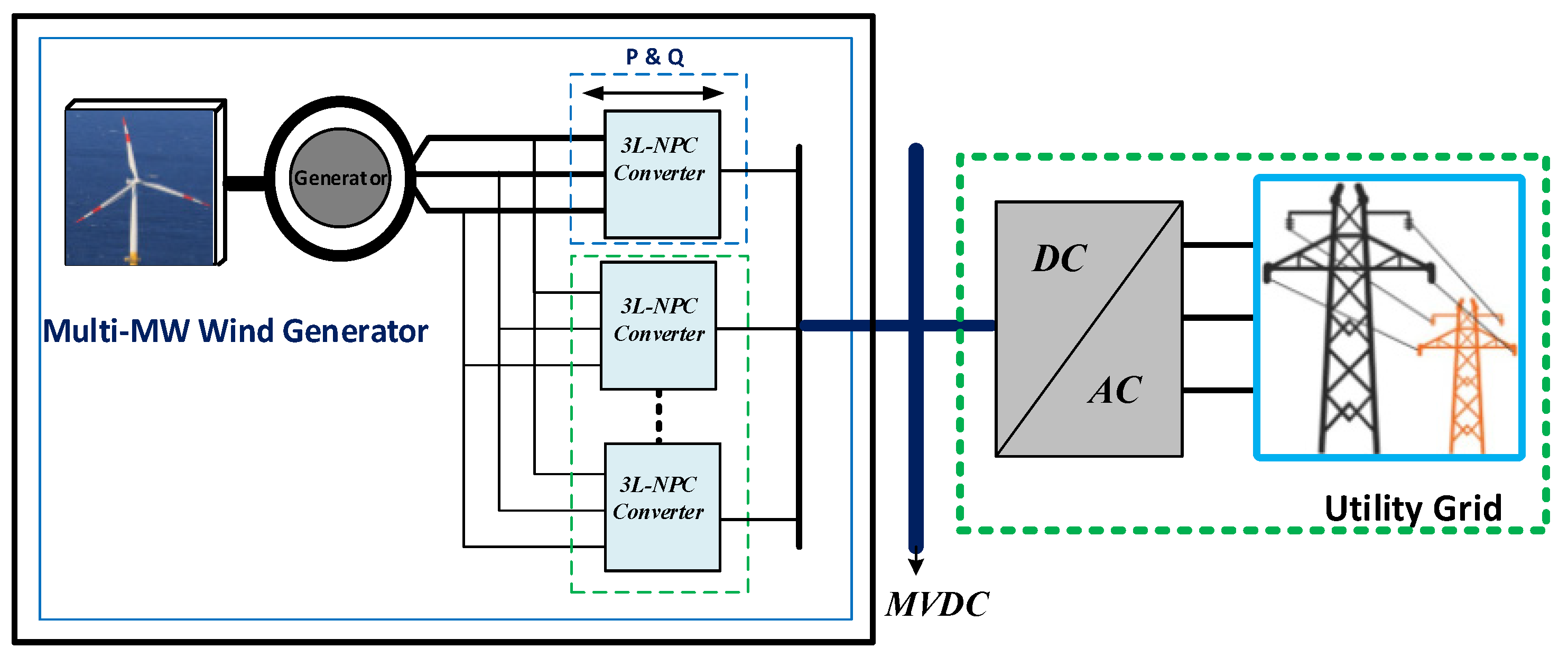
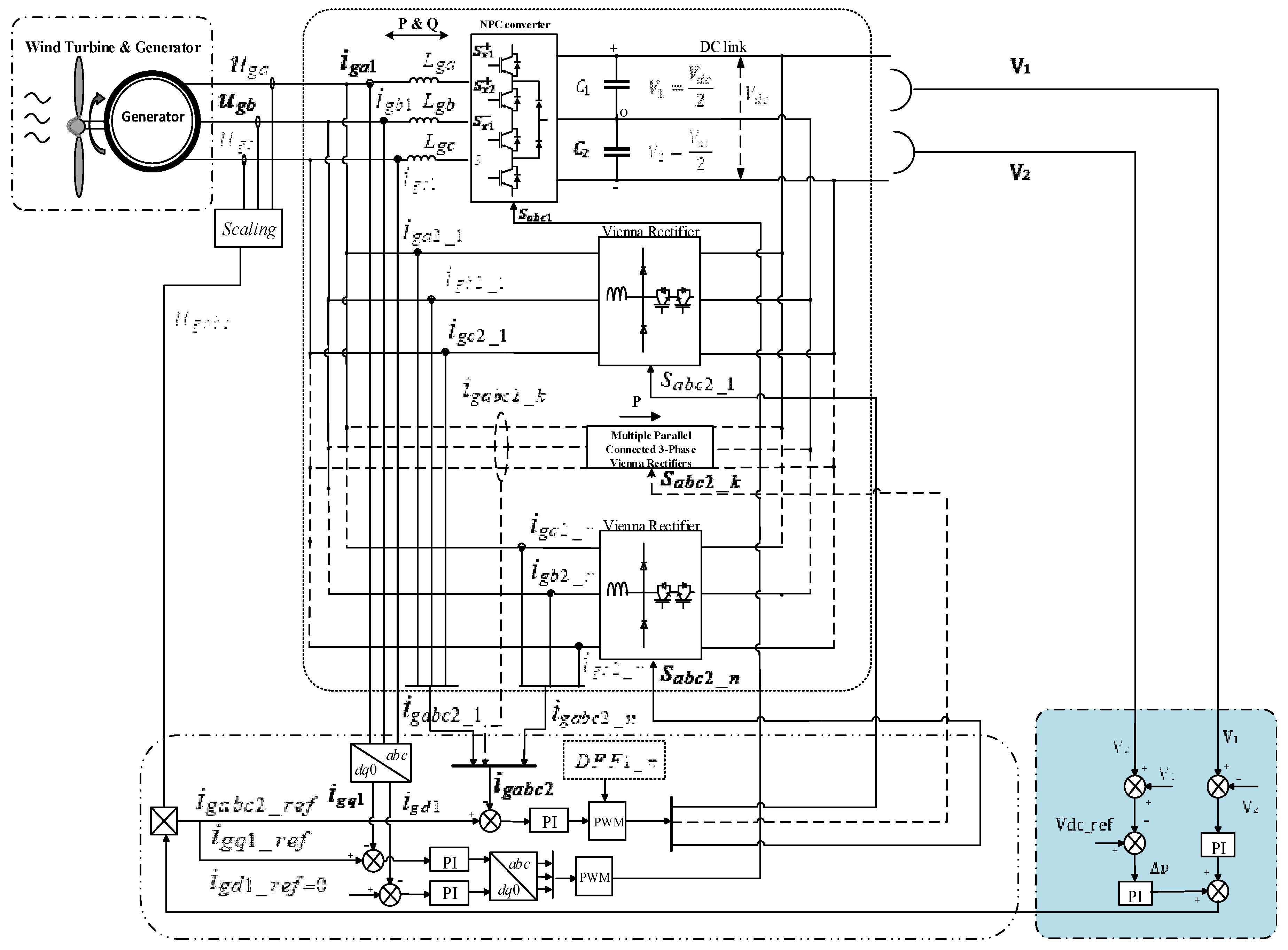
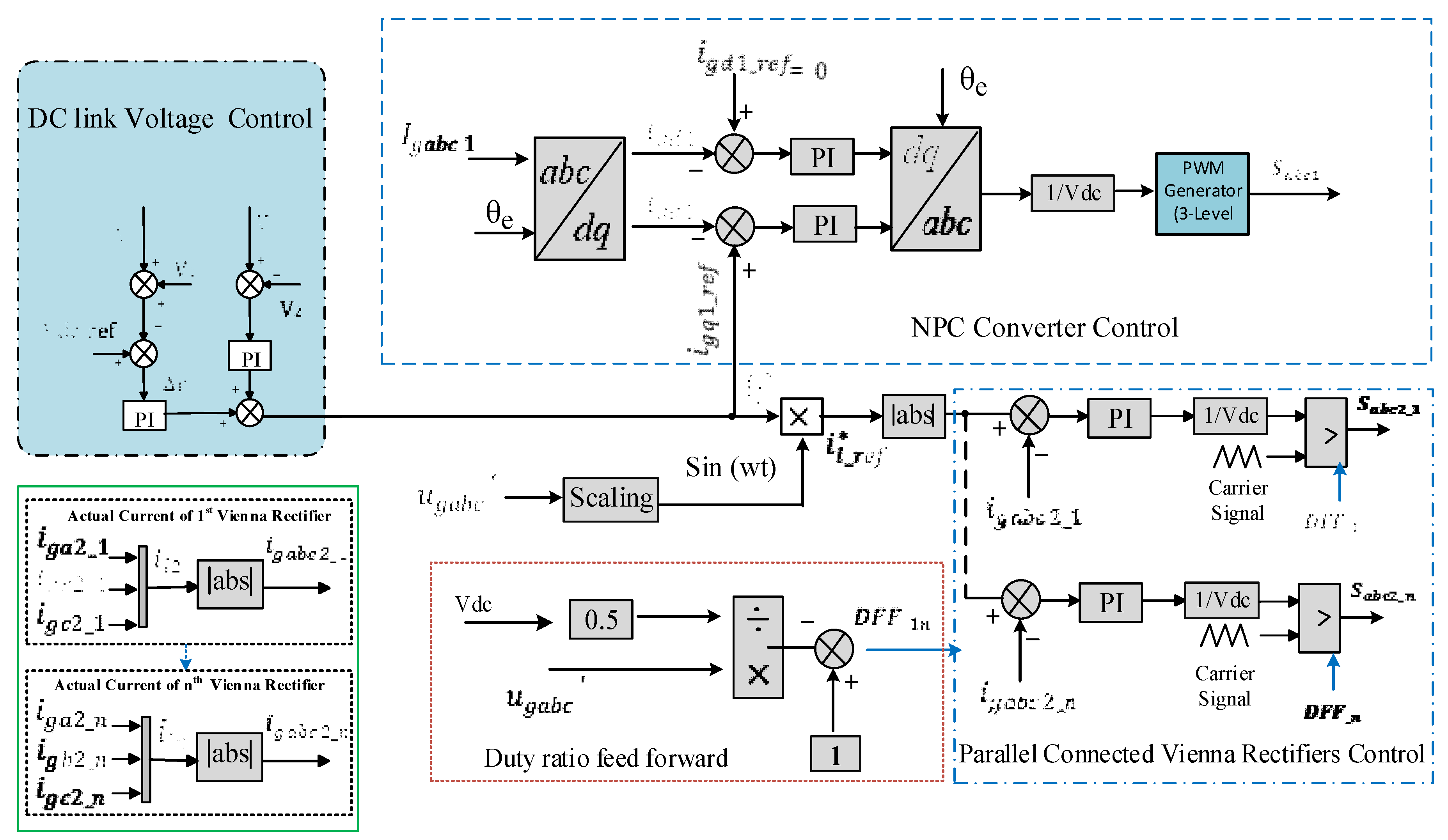

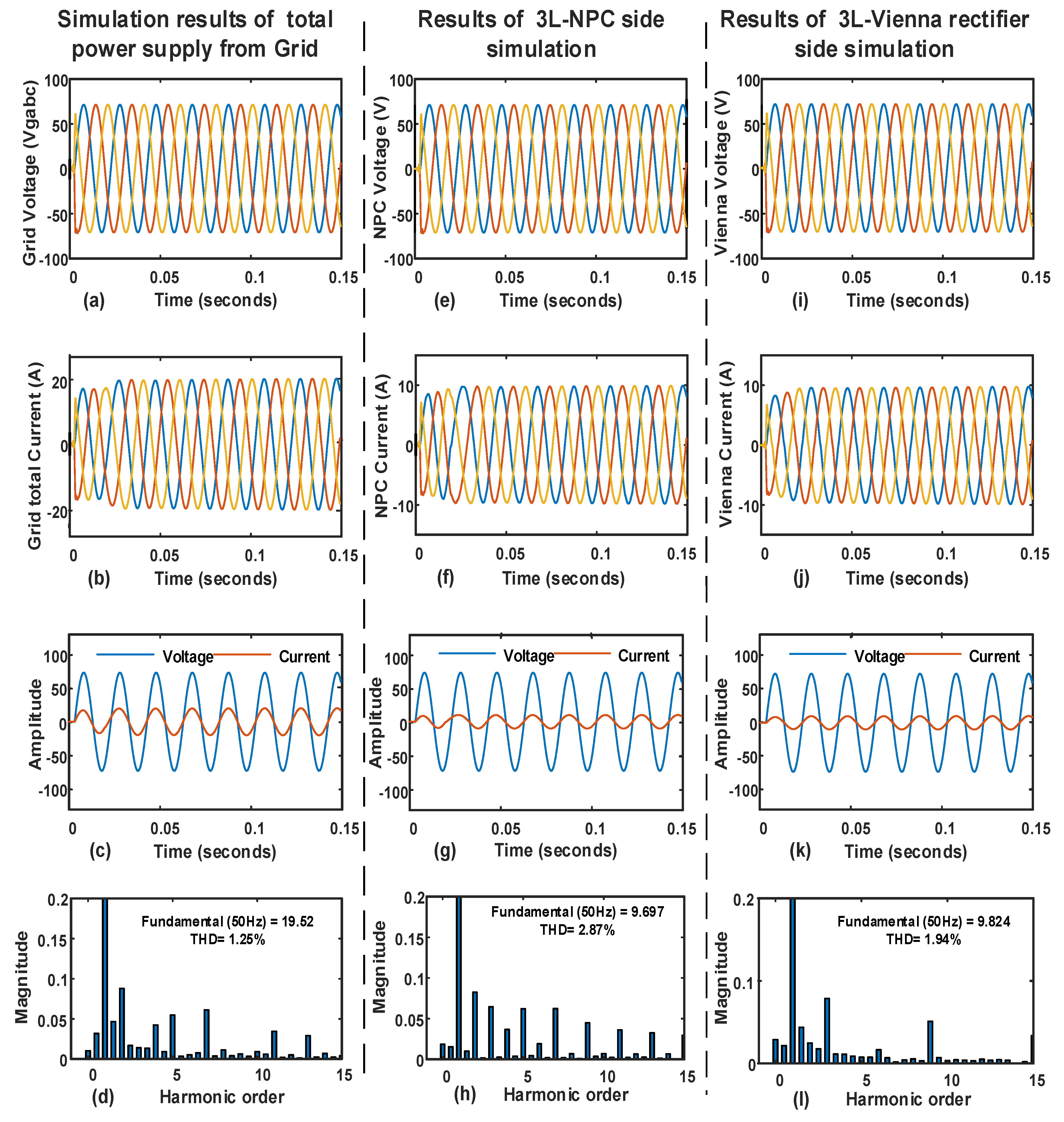

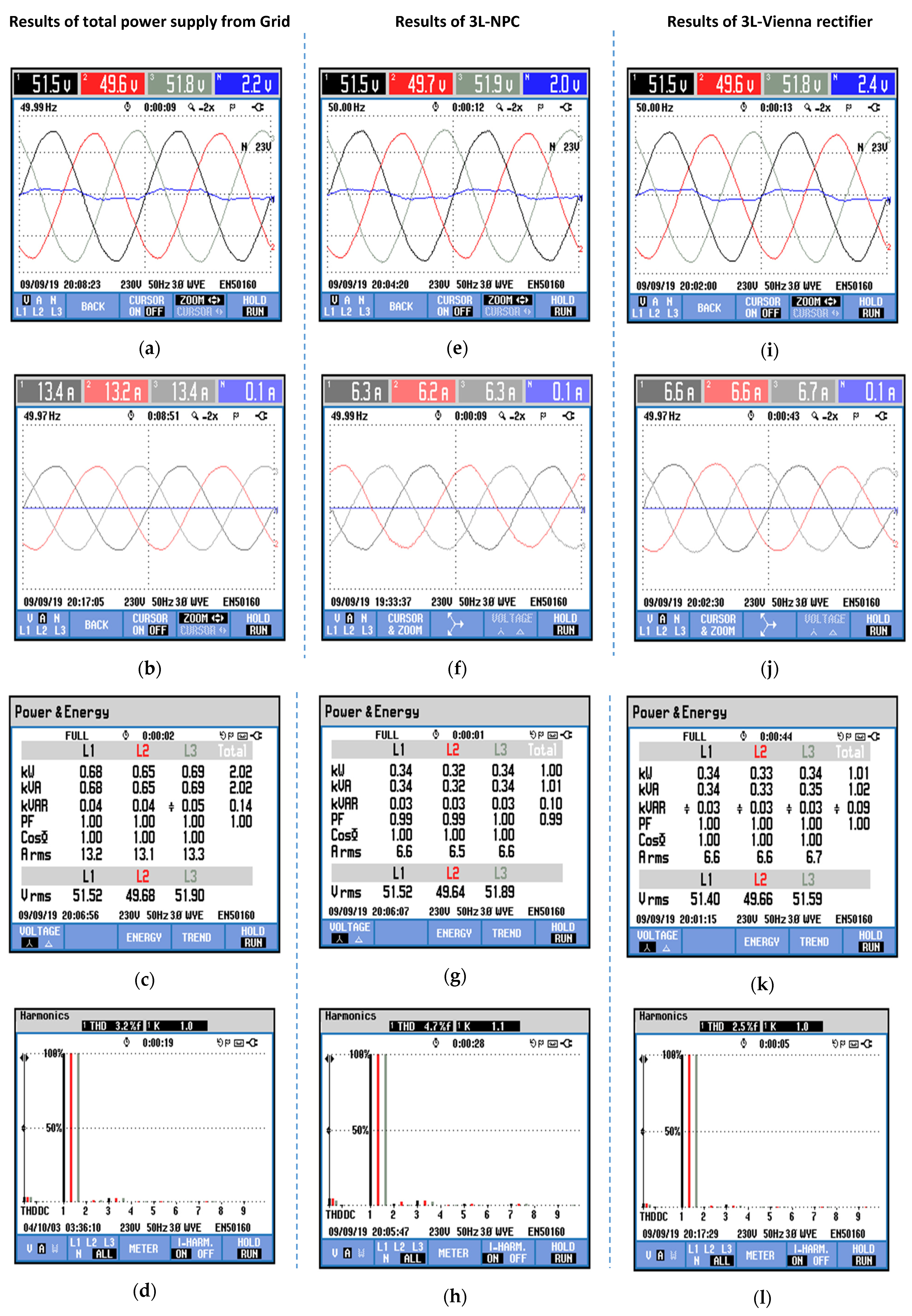
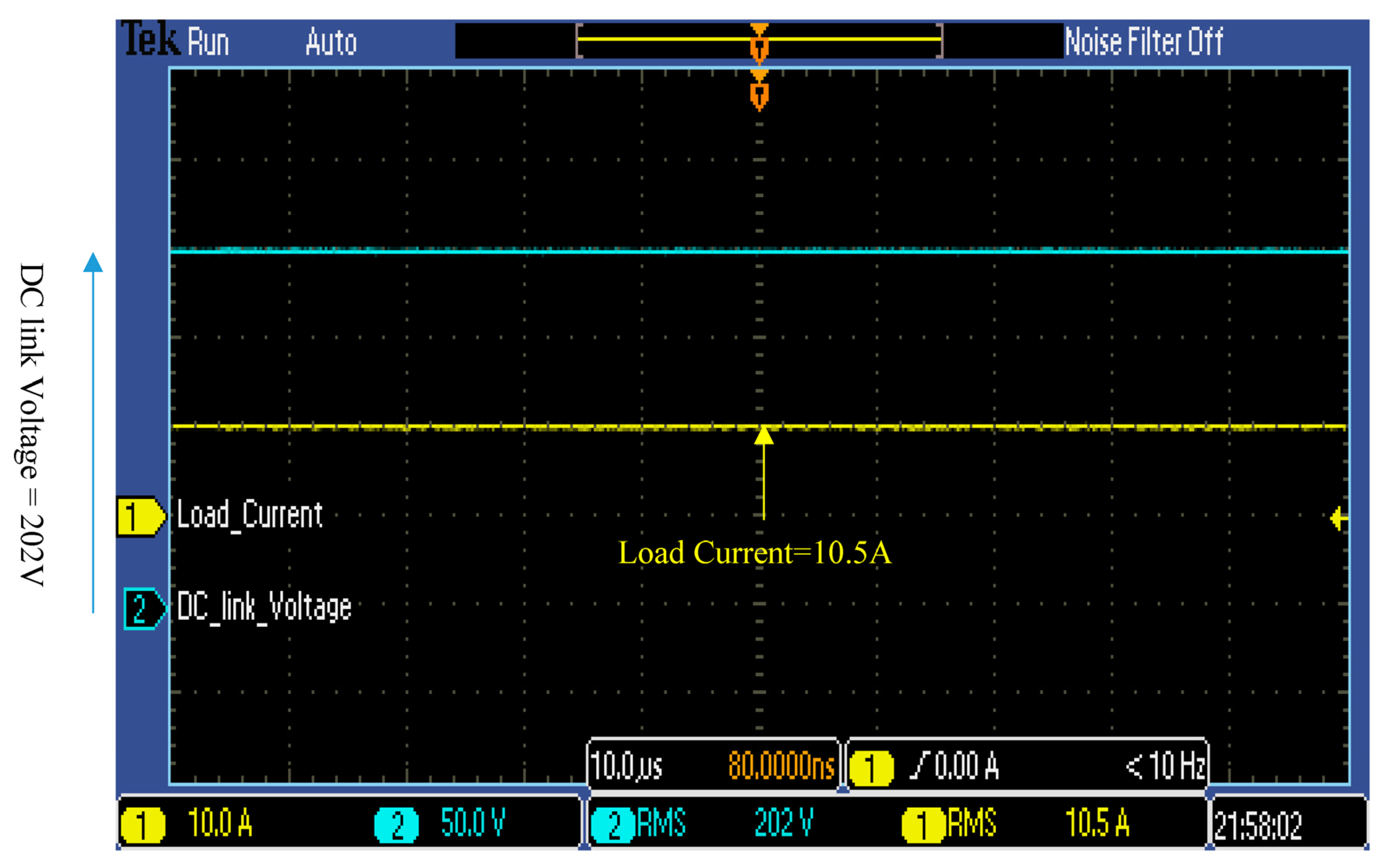
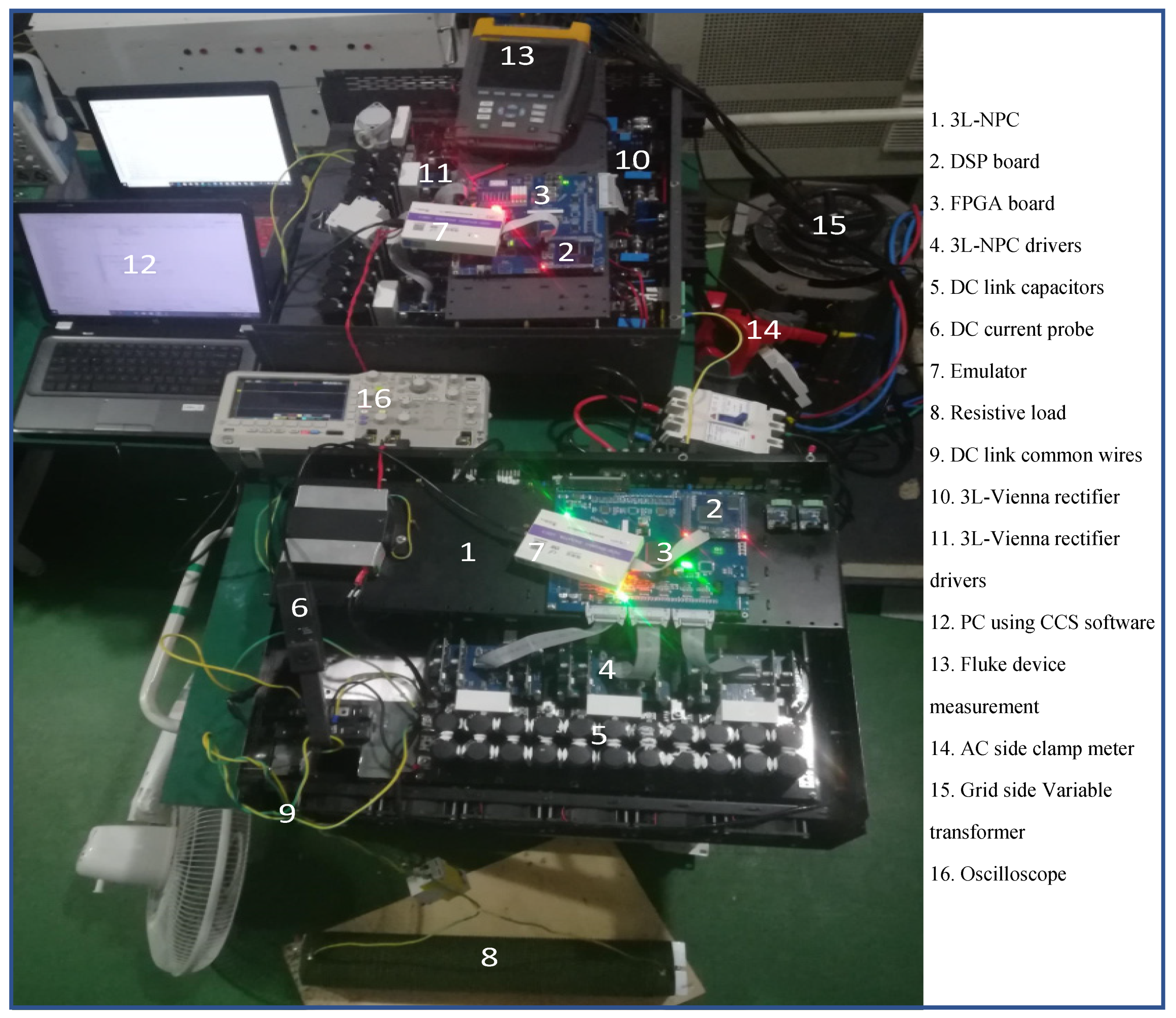
| Converter Type | Number of Diodes | Number of IGBTs | Number of IGBTs Drivers | Total Number of Devices |
|---|---|---|---|---|
| Two-level | 6 | 6 | 6 | 18 |
| Three-level NPC | 18 | 12 | 12 | 42 |
| 3L-Vienna rectifier | 12 | 6 | 6 | 24 |
| Conf. | |||||
|---|---|---|---|---|---|
| 1st 1100 | 1 | 1 | 0 | 0 | |
| 2nd 0110 | 0 | 1 | 1 | 0 | 0 |
| 3rd 0011 | 0 | 0 | 1 | 1 |
| Parameter | Value |
|---|---|
| Total power | 2 KW |
| Grid side voltage | 50 Vrms |
| DC- link voltage | 200 V |
| Grid frequency | 50 Hz |
| Switching frequency | 15 KHz |
| Inductor (3L-NPC/Vienna) | 300 uH |
| C1/C2 capacitor | 9020 uF |
© 2019 by the authors. Licensee MDPI, Basel, Switzerland. This article is an open access article distributed under the terms and conditions of the Creative Commons Attribution (CC BY) license (http://creativecommons.org/licenses/by/4.0/).
Share and Cite
Luqman, M.; Yao, G.; Zhou, L.; Zhang, T.; Lamichhane, A. A Novel Hybrid Converter Proposed for Multi-MW Wind Generator for Offshore Applications. Energies 2019, 12, 4167. https://doi.org/10.3390/en12214167
Luqman M, Yao G, Zhou L, Zhang T, Lamichhane A. A Novel Hybrid Converter Proposed for Multi-MW Wind Generator for Offshore Applications. Energies. 2019; 12(21):4167. https://doi.org/10.3390/en12214167
Chicago/Turabian StyleLuqman, Muhammad, Gang Yao, Lidan Zhou, Tao Zhang, and Anil Lamichhane. 2019. "A Novel Hybrid Converter Proposed for Multi-MW Wind Generator for Offshore Applications" Energies 12, no. 21: 4167. https://doi.org/10.3390/en12214167
APA StyleLuqman, M., Yao, G., Zhou, L., Zhang, T., & Lamichhane, A. (2019). A Novel Hybrid Converter Proposed for Multi-MW Wind Generator for Offshore Applications. Energies, 12(21), 4167. https://doi.org/10.3390/en12214167





